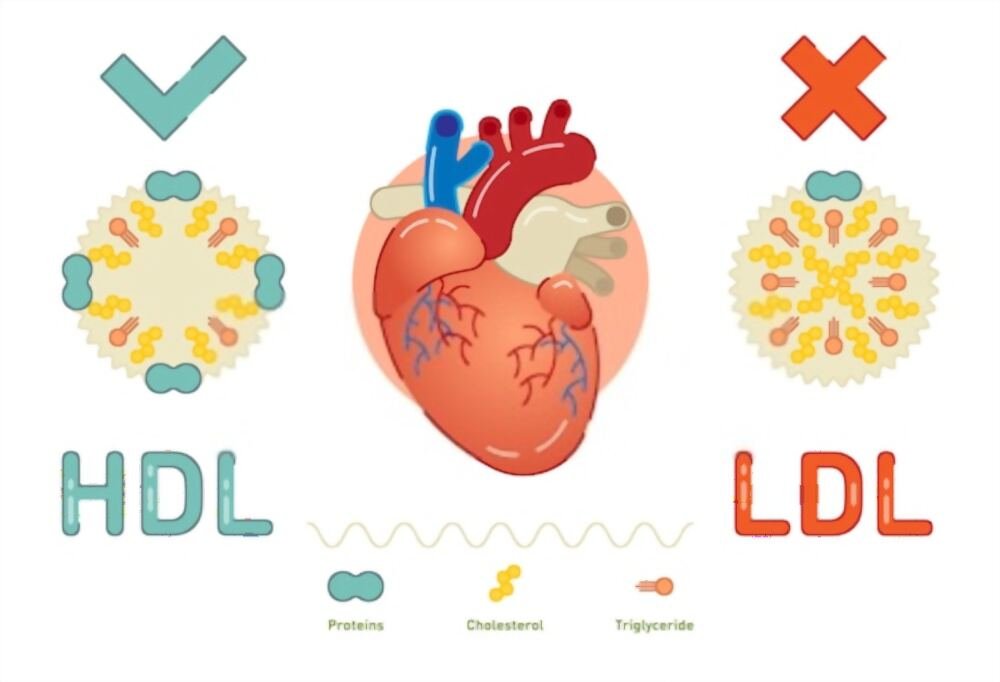Cholesterol, a type of lipid, is a waxy substance produced by the liver. Cholesterol is essential for our body as it aids the process of formation of the cell membrane. It makes up the digestive bile juices in our intestine. These juices enable the fat to get emulsified so that they are easily absorbed by the cells.
Contents
Where Does Cholesterol Synthesis Occur?
Cholesterol also allows the production of Vitamin D and certain hormones like glucocorticoids, mineralocorticoids, progestagens, androgens, and estrogens. This acts as a structural component for these chemicals and provides stability and fluidity. It travels around our body with the help of lipoproteins that are also produced by the liver.

What are lipoproteins?
Lipoproteins are particles that carry triglycerides and cholesterol in our body. They are made up of fats and proteins.
Two types of lipoproteins aid the transportation of cholesterol:
- Low-density lipoprotein (LDL): This route is taken by that cholesterol that is unhealthy for our health. The “bad cholesterol” increases the chances of heart disease and stroke in our body.
- High-density lipoprotein (HDL): Cholesterol transported by HDL is considered as “good” cholesterol. This cholesterol helps in removing other forms of cholesterol from our body and prevents the building up of cholesterol plaque in your arteries. Also, it lowers the risks of blood clots, heart diseases, and stroke.
The presence of a high amount of LDL cholesterol in the bloodstream can cause high cholesterol. Since it is generally asymptomatic, it is important to check the cholesterol level regularly to make sure that your body is safe and healthy. According to the American Health Association, a person aged 20 years or above must check his cholesterol at least once every four to six years.
Chemistry of Cholesterol
- Chemical Formula: C27H46O
It is an organic compound that belongs to the steroid family. A pure cholesterol compound is a white, crystalline, colorless, and odorless substance that is present in blood plasma in all the animal tissues.
- Structure:
Cholesterol, a 27 carbon compound, has a unique structure with a central sterol nucleus made up of four hydrocarbons, a hydrocarbon tail, and a hydroxyl group. The central ring and hydrocarbon tail are non- polar. Thus, it doesn’t mix with water. Hence, to transport the cholesterol through the bloodstream, it is packaged with apoproteins that form lipoproteins.

Cholesterol Synthesis Site In Our Body
Cholesterol can be obtained from dietary sources or can be synthesized de novo. Although other cells can also synthesis cholesterol to a small extent, the main sites for its formation are liver and intestinal mucosa. The liver synthesizes about 70-80% of the total cholesterol that is present in our body, and the small intestine synthesizes 10%.
The process of synthesis of cholesterol occurs in the hepatic cytoplasm and is aided by the enzymes present in the cytoplasm and smooth endoplasmic reticulum (SER). Biosynthesis of cholesterol that involves condensation of 2 molecules of acetyl-CoA and formation of acetoacetyl- CoA marks the beginning of this process.
This step is followed by the addition of a third molecule of acetyl-CoA to acetoacetyl- CoA by cytosolic enzyme HMG- CoA. This results in the formation of a six-carbon compound called 3-hydroxy-3-methyl-glutaryl coenzyme- CoA.
An isoenzyme of HMG-CoA synthase catalyzes the rate-limiting reaction in ketogenesis. HMG-CoA reductase help in catalyzing the reaction that reduces the HMG-CoA to mevalonate. This is a regulatory enzyme that is present in the smooth ER. This process of Synthesis of mevalonate is the key step in the synthesis of cholesterol.
Mevalonate converts to 3-isopentenyl pyrophosphate, farnesyl pyrophosphate, squalene, and lanosterol by a series of reactions.
Lanosterol, after going through another19-step ER-associated process, finally synthesize cholesterol. 7-dehydrocholesterol reductase catalyzes the terminal step that results in the conversion of 7-dehydrocholesterol to cholesterol.
The synthesis of cholesterol in our body is regulated by modulating HMG-CoA reductase via different mechanisms. Some of these mechanisms are:
- Covalent modification of enzymes
- Hormonal control
- Allosteric feedback inhibition
- Transcriptional control of gene expression
Cholesterol from Dietary Sources
Before releasing dietary triglycerides and cholesterol into the circulation system as Very low-density lipoproteins (VDL), they are packaged together with Apo proteins in the liver. The VLDL that is circulated in our body contains cholesterol, triglycerides, and phospholipids. Smaller low-density lipoproteins (VLDL), rich in cholesterol, ars formed by the degradation of triglycerides.
The LDLs travel through the bloodstreams and reach the peripheral tissues. On the cell membrane, the LDL was recognized by the LDL receptors and were endocytosed through receptor-mediated endocytosis. HDL, on the other hand, get rid of the excess cholesterol by carrying it from the peripheral tissue to the liver in a reverse transport mechanism.
Since we produce enough cholesterol in our body, we don’t need to consume it from dietary sources. The lipids present in those food items can produce LDL and cause damage to our body. Therefore, one must take care of certain facts while consuming food.
One must pay attention to the levels of added sugar, the saturated, and trans fat present in the food before eating it. Consumption of a lesser amount of fats can keep your body healthy.
One can replace saturated fats with more healthy and saturated fats. For example, butter can be replaced with extra virgin olive oil in cooking or nuts, and seeds can replace processed snack foods.
Genetics do play a very important role in determining the amount of HDLs present in our body, or the amount LDLs that could be replaced HDLs. Older people or obese ones have more cholesterol than people sho who are not. But, taking precautionary measures can help a person maintain a balance between the HDLs and LDLs in our body.
Consuming a balanced diet, drinking adequate water, and performing regular exercise can help you to achieve this goal. If you have high cholesterol, you should take medications prescribed by the doctor regularly. These therapeutic pharmacologic drugs target the HMG- CoA reductase to inhibit the process of production of cholesterol.
